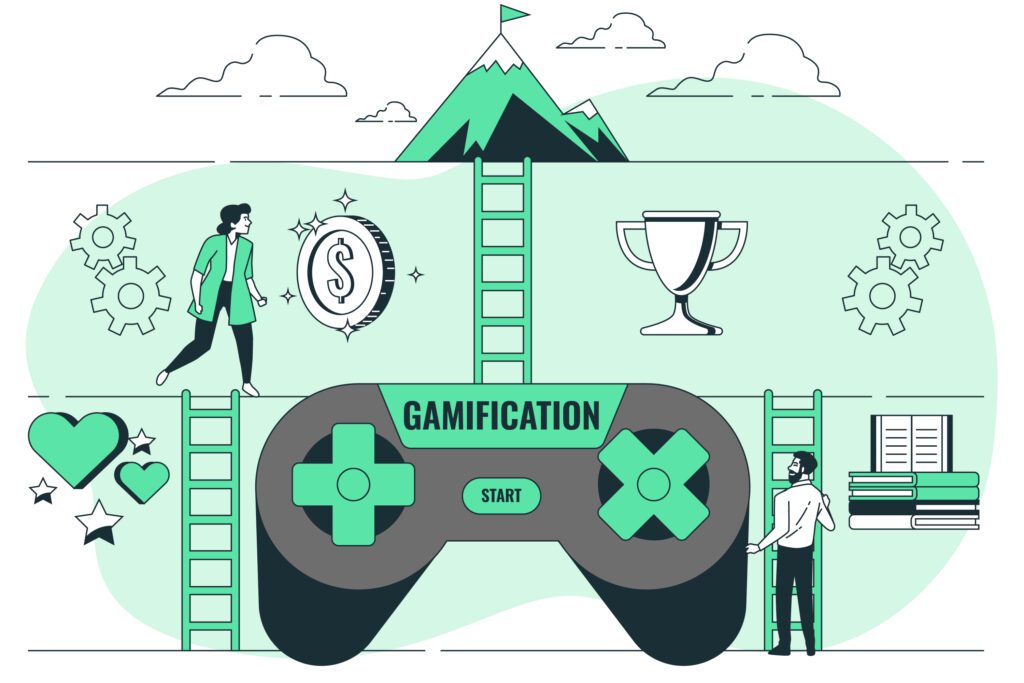In the rapidly evolving landscape of corporate training and employee engagement, the integration of gamification into business practices has emerged as a transformative strategy. By leveraging game mechanics, organizations can create immersive experiences that not only engage employees but also enhance their skill sets. This article delves into the intricacies of building a business game, exploring its benefits, methodologies, and real-world applications, supported by research and data.
The Rationale Behind Business Games
According to a study by the Gartner Group (2020), 70% of organizations are utilizing gamification in some capacity. This trend underscores the growing recognition of gamification as a powerful tool for enhancing employee engagement and skill development. The core premise is simple: by incorporating game-like elements into training and development programs, organizations can foster a more engaging and motivating environment.
Understanding Gamification and Its Components
Gamification involves the application of game design elements in non-game contexts to enhance user engagement. Key components include:
- Points: Rewarding employees for completing tasks or achieving milestones.
- Badges: Visual representations of accomplishments that can motivate employees.
- Leaderboards: Ranking employees based on their performance, fostering a sense of competition.
- Challenges: Specific tasks or missions that encourage skill application and development.

These elements can be tailored to fit the specific needs of an organization, ensuring that the game aligns with corporate goals and employee development objectives.
Designing an Effective Business Game
1. Define Objectives
The first step in designing a business game is to clearly define the objectives. What skills do you want to develop? Is it teamwork, problem-solving, or technical skills? For instance, a company like IBM has successfully implemented games to enhance coding skills among its employees, focusing on specific programming languages and problem-solving techniques.
2. Identify Target Audience
Understanding the demographics and preferences of your employees is crucial. A game designed for millennials may differ significantly from one aimed at baby boomers. Research from Pew Research Center (2021) indicates that younger employees are more inclined towards interactive and digital learning methods, making gamification particularly appealing to this demographic.
3. Develop Engaging Content
The content of the game should be relevant and engaging. Incorporating real-world scenarios can enhance relatability and applicability. For example, Salesforce developed a game called “Trailhead” that allows employees to navigate through various sales scenarios, enhancing their skills in a practical context.
4. Implement Feedback Mechanisms
Feedback is a critical component of any learning process. Incorporating real-time feedback within the game can help employees understand their performance and areas for improvement. A study by Harvard Business Review (2019) found that immediate feedback significantly enhances learning outcomes, making it an essential feature in business games.

Real-time feedback enhances learning and performance in games.
5. Measure Success
Establishing metrics to evaluate the effectiveness of the game is vital. Key performance indicators (KPIs) such as employee engagement levels, skill acquisition rates, and overall productivity should be monitored. For instance, a case study on Deloitte revealed that organizations implementing gamified training saw a 50% increase in employee engagement and a 30% improvement in skill retention.
Real-World Examples of Successful Business Games
1. Deloitte Leadership Academy
Deloitte’s Leadership Academy is a prime example of a successful business game. It combines online learning with gamification elements, allowing employees to engage in leadership scenarios and receive feedback on their decision-making skills. The program has reportedly increased completion rates by 50% and improved knowledge retention by 30% (Deloitte, 2020).
2. Cisco’s Networking Academy
Cisco’s Networking Academy utilizes gamification to teach networking skills. The program includes interactive simulations and challenges that mimic real-world networking scenarios. According to Cisco, participants in the academy have a 20% higher job placement rate compared to non-participants (Cisco, 2021).
Challenges in Implementing Business Games
While the benefits of gamification are substantial, organizations may face challenges in implementation. Common obstacles include:
- Resistance to Change: Employees may be skeptical about new training methods.
- Resource Allocation: Developing a high-quality game requires time and financial investment.
- Technical Issues: Ensuring that the game functions smoothly across various platforms can be challenging.
Addressing these challenges requires a strategic approach, including clear communication about the benefits of gamification and adequate training for employees on how to engage with the new system.
The Future of Business Games
The future of business games looks promising, with advancements in technology such as virtual reality (VR) and augmented reality (AR) set to revolutionize the training landscape. A report by Statista (2022) predicts that the global gamification market will reach $30 billion by 2025, highlighting the growing investment in this area.
Moreover, as organizations continue to prioritize employee engagement and skill development, the demand for innovative training solutions will only increase. Business games will likely evolve to incorporate more sophisticated technologies, providing even more immersive and effective learning experiences.
Conclusion
Building a business game is not merely about creating an engaging experience; it is about strategically enhancing employee skills and fostering a culture of continuous learning. By defining clear objectives, understanding the target audience, developing engaging content, implementing feedback mechanisms, and measuring success, organizations can create impactful training programs that drive employee engagement and skill development. As the landscape of corporate training continues to evolve, embracing gamification will be essential for organizations aiming to stay competitive in the modern workforce.

